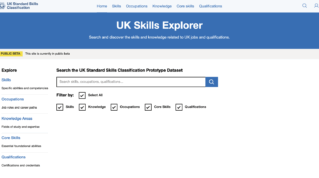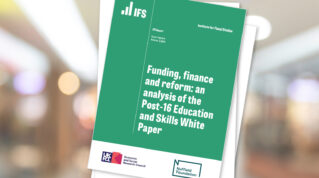Further and higher education leaders will be expected to share employer intelligence, research on local skills needs and details about training provision with each other under new local skills improvement plan guidance published by Skills England today.
In devolved areas, the guidance confirms that strategic authorities will be joint owners of the plans, alongside the designated employer representative bodies (ERBs).
£6.3 million has since been dished out so far to 39 employer bodies update local skills improvement plans (LSIPs) by next summer – around £160,000 each.
LSIPs were first pledged in the 2021 FE white paper and require local stakeholders such as employers, training providers and councils to collaboratively identify and resolve skills needs. The first wave of plans were published in 2023, with each area required to publish annual progress reports.
Skills England’s new guidance sets out requirements for the second round of LSIPs. More devolution means there will be stronger roles for strategic authorities to agree to the plans, and there are more expectations on further and higher education providers to identify and help solve local skills shortages.
Here are the main takeaways from today’s guidance for LSIPs 2.0.
Skills England involvement
Today’s guidance clarified that Skills England will have overall responsibility and oversight of the LSIP programme.
Officials will also be able to recommend actions to the Department for Education (DfE) and Department for Work and Pensions (DWP) that would remove any broader national issues that are “blocking progress”.
Though Skills England has overall oversight, the guidance added that its function will not “cut across” the LSIP governance role in overseeing delivery.
“Focus will be on assurance that all LSIPs are on track and have strong processes in place for monitoring progress and managing risks,” it said.
ERBs are also expected to report annual on their progress to “keep the LSIP under regular review”.
Skills England will have the power to decide on funding needed for ERBs who are making “insufficient progress” based on its ability to monitor or drive sustained action.
In extreme cases, Skills England officials can recommend the government removes an ERBs designation.
Officials will also share data insights on national and local skills needs via a “regular two-way flow” of information.
LSIPs need Skills England and minister approval
The guidance reinforced ERBs legal duty to submit the LSIPs to the secretary of state for approval, a draft of which should be filed “via Skills England” by March 31, 2026.
Skills England will then review and provide feedback “as appropriate”, and a final version should be submitted by May 2026.
Subject to minister approval, LSIPs are expected to be published in June.
The publication added that disagreements between the ERB and strategic authority should be referred back through the LSIP governance structure.
But if no resolutions are found, Skills England will attempt to mediate and if that doesn’t work, the secretary of state will use statutory powers to approve the plan, so long as the strategic authority’s priorities are included.
All together now
Last month’s post-16 education and skills white paper pledged “clearer expectations” on higher education providers engage in LSIPs, particularly around technical training at levels 4 to 8.
Today’s guidance requires further and higher education providers to “develop a clear understanding of an area’s technical skill needs up to and including level 8, and the actions needed (at the collective and individual institution level) to address any gaps”.
They should share intelligence based on their own research and engagement with employers, as well as “information about their current skills provision”.
New-style LSIPs should therefore create “a more coherent post-16 education system with better pathways and opportunities to progress from entry up to higher level skills”.
Strategic authorities will be responsible for enforcing “coherent” collaboration between FE and HE organisations in their areas, and avoiding “fragmented provision”.
Measuring impact over three-year cycle
LSIPs should include outcomes they expect to achieve over the three-year cycle and details of how progress will be measured and the metrics that will be used.
“This will enable better measurement and reporting of progress locally, and across LSIPs nationally,” DfE said.
Outcomes should refer to reducing skills gaps, employer engagement, changes in skills provision compared with LSIP priorities, and changes in how funding supports skills priorities.
Regarding metrics, the guidance offered suggestions such measuring numbers of employers “meanfully” engaged, for example, involvement in co-designing provision, offering industry placements or taking up learning provision.
It also suggested measuring changes in the curriculum offer, or information on increased take up of priority provision.
“This information will help support Skills England’s role in monitoring and overseeing the LSIP programme including assessing how LSIPs collectively are contributing to national skills priorities and identifying any persistent gaps or areas of significant oversupply,” DfE said.
Only in “exceptional” instances where skills needs shift in the three-year cycle should a replacement LSIP be recommended.
















Your thoughts